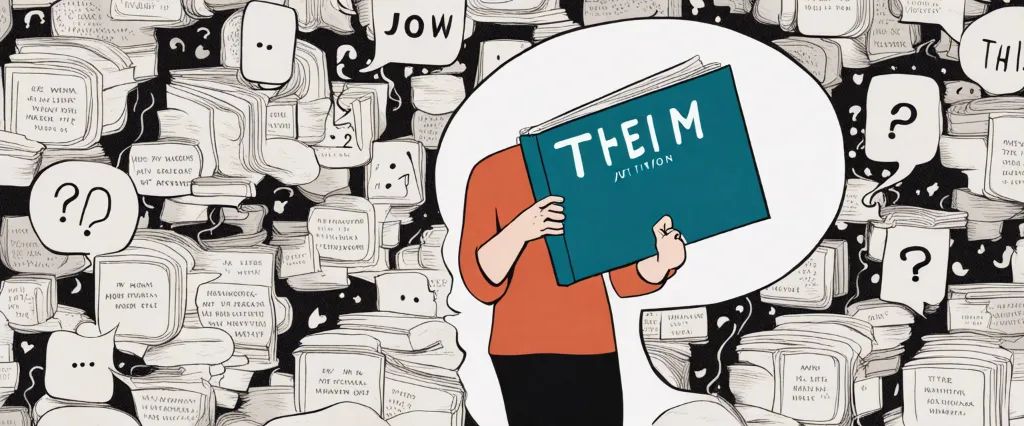In “Them,” a captivating exposé by Jon Ronson, readers are plunged into the intricate world of extremists and conspiracy theorists. Ronson, a renowned journalist and author, fearlessly immerses himself in their enigmatic gatherings to unveil the peculiar beliefs held by these fringe groups. With a mix of wit, skepticism, and empathy, Ronson navigates the fine line between understanding and condemnation, providing an insightful examination of the human inclination towards shared fears and collective delusion.
Chapter 1: The Bilderberg Group – Investigating the secretive meetings of the world’s elite.
Chapter 1 of “Them: Adventures with Extremists” by Jon Ronson explores the secretive meetings of the world’s elite known as the Bilderberg Group. Ronson sets out to investigate the rumors and conspiracy theories surrounding this group, aiming to understand their alleged influence on global governance and the speculation that they are working towards establishing a New World Order.
Presented with a tinge of humor and skepticism, Ronson introduces us to his journey by attending the group’s annual conference, held in a luxury hotel in Portugal. He highlights the elusiveness of the meeting, mentioning the heavy security and difficulty in gaining access. With help from an insider, he manages to infiltrate the outer perimeter and observe attendees from a distance.
Throughout the chapter, Ronson shares encounters with various individuals who oppose the Bilderberg Group, including conspiracy theorists and protesters. He interviews American radio host, Alex Jones, who adamantly believes that the group consists of a secret international government that manipulates world events. Another activist, Mark Anderson, shares his belief that the Bilderberg Group is an exclusive club for elites who control the world’s economies and policies.
While Ronson acknowledges the intriguing nature of these conspiracy theories, he remains skeptical and recognizes the need for further evidence. He muses over the possibility of power and influence being concentrated within a secretive elite group, but also leaves room for doubt. This sets the stage for the subsequent chapters, as Ronson continues his investigation into other extremist groups and their conspiracy theories.
Overall, Chapter 1 of “Them” serves as an introduction to the mysterious Bilderberg Group and the conspiracy theories surrounding their meetings, inviting readers to delve deeper into the hidden world of the allegedly all-powerful global elite.
Chapter 2: Ruby Ridge – Examining the deadly standoff between the Weaver family and the U.S. government.
Chapter 2 of “Them” by Jon Ronson examines the infamous and deadly standoff between the Weaver family and the U.S. government at Ruby Ridge. The chapter delves into the story of Randy Weaver, a former Green Beret living in rural Idaho who becomes entangled in a tragic chain of events.
The chapter begins by exploring Weaver’s background, describing his move to the remote Ruby Ridge area and his increasing isolation from the outside world. Weaver’s association with the white supremacist group Aryan Nations and his involvement in illegal activities cast a cloud of suspicion over him. However, it is revealed that Weaver’s true motivations were not rooted in racism, but rather a desire to protect his family and live off the grid.
Ronson then turns to the events leading up to the standoff. It is revealed that law enforcement officials, in an attempt to infiltrate a right-wing extremist group, manipulated Weaver into selling them sawed-off shotguns. This resulted in Weaver being charged with a federal firearms violation. When attempts to arrest Weaver failed, a warrant was issued, and the situation escalated.
The chapter describes the standoff itself, which lasted for days and resulted in the deaths of Weaver’s wife Vicki and son Samuel, as well as a U.S. Marshal. Ronson sheds light on the confusion, incompetence, and questionable tactics employed by federal agencies during the standoff, highlighting the tragic consequences of these actions.
Through this chapter, Ronson highlights the power dynamics and systemic issues within the U.S. government that led to the Ruby Ridge tragedy. He poses challenging questions about the limits of state power, the role of extremists in society, and the lengths to which governments should go to tackle potential threats, while also emphasizing the devastating impact such decisions can have on innocent lives.
Chapter 3: David Icke – Exploring the beliefs and influence of the conspiracy theorist.
Chapter 3 of “Them” by Jon Ronson delves into the life, beliefs, and influence of David Icke, a renowned conspiracy theorist. Ronson’s exploration begins with an introduction to Icke’s prior career as a British television sports presenter and his sudden transformation into a proponent of outlandish conspiracy theories.
Ronson attends one of Icke’s lectures where he witnesses the ex-sports presenter discussing various conspiracy theories, such as the idea that the world is controlled by a reptilian elite of shape-shifting aliens. Despite the absurdity of these claims, Icke has managed to gather a substantial following of dedicated believers.
In his research, Ronson interviews Icke’s followers, referred to as “the Ickean Army,” to better understand their convictions and their reasons for embracing such extraordinary ideas. Ronson finds that many of these individuals have experienced personal traumas or suffer from mental health issues, making them vulnerable to Icke’s enticing narratives that offer a sense of control and meaning in an otherwise chaotic world.
As Ronson delves deeper into Icke’s beliefs, he discovers a pattern of anti-Semitism and the poisoning of political and cultural discourse. This revelation leads Ronson to question whether Icke’s conspiracy theories should be treated merely as entertainment or if they have the potential to inspire real-world harm.
The chapter concludes with Ronson attending a gathering of Icke’s followers, witnessing their devotion and the spectacle of Icke’s showmanship. Ronson is left contemplating the dangerous implications of Icke’s influence and the impact it may have on society.
Chapter 4: Omar Bakri Muhammad – Uncovering the radical Islamist preacher and his followers.

Chapter 4 of “Them” by Jon Ronson delves into the investigation surrounding the radical Islamist preacher Omar Bakri Muhammad and his followers. Ronson explores the rise of Islamic extremism in Britain and the United States following the 9/11 attacks.
The chapter begins with Ronson traveling to London to meet with Omar Bakri, who is infamous for his controversial statements and support for terrorist organizations. Ronson attends one of his sermons, witnessing the preacher’s charismatic and persuasive nature, which attracts a loyal following of young British Muslims.
Ronson interviews former followers of Omar Bakri, discovering that many were initially drawn to his message of justice for Muslims worldwide but became disillusioned over time. One former follower confesses to Ronson that Bakri had once suggested he join terrorist groups, leading to a loss of faith. Despite this, Ronson finds that Bakri’s ability to manipulate and radicalize impressionable young minds remains a concerning aspect of his influence.
During his investigation, Ronson highlights the complexities surrounding security agencies’ efforts to monitor figures like Bakri. He interviews individuals within these agencies who express frustration at their inability to take concrete action against extremists without solid evidence of criminal activity.
The chapter also touches on the paranoia that can arise when investigating radical preachers. Ronson recounts an incident where he is stopped and questioned extensively by U.S. officials due to suspicions raised by his research on Islamic extremism.
In conclusion, Chapter 4 of “Them” reveals the disturbing allure and potential dangers of charismatic preachers like Omar Bakri Muhammad, who exploit vulnerable individuals and contribute to the spread of radical ideologies. It sheds light on the challenges faced by security agencies in combating radicalization and underscores the need for a delicate balance between surveillance and maintaining civil liberties.
Chapter 5: Randy Weaver – Diving into the life of the Weaver family and their anti-government views.
Chapter 5 of “Them” by Jon Ronson focuses on Randy and Vicki Weaver, a couple living in the mountains of northern Idaho. The chapter explores their backstory, their anti-government views, and their subsequent involvement in the Ruby Ridge standoff.
Randy Weaver, a former Army Green Beret, moved his family to a secluded cabin in Ruby Ridge, Idaho, seeking a more independent and self-reliant lifestyle. The Weavers embraced a radical ideology that advocated for limited government intervention and a rejection of mainstream society. They believed in survivalism and preparedness for a perceived collapse of society.
The chapter delves into the influences that shaped Randy and Vicki’s extremist beliefs, including encounters with white supremacist groups and survivalist organizations. Ronson portrays Randy as a fiercely independent but ultimately isolated individual, alienated from society by his ideological convictions.
The Ruby Ridge standoff, which occurred in August 1992, forms the climax of this chapter. Randy Weaver’s involvement began when he sold a pair of sawed-off shotguns to an undercover agent from the Bureau of Alcohol, Tobacco, and Firearms (ATF). This transaction marked the beginning of what would become a deadly confrontation between the Weaver family and federal law enforcement agents.
Throughout the chapter, Ronson presents contrasting perspectives on the Weavers. Some view them as harmless eccentrics exercising their right to dissent, while others perceive them as dangerous extremists. This raises questions about the line between individual liberty and potential threats to national security.
In conclusion, Chapter 5 of “Them” explores the life and beliefs of Randy and Vicki Weaver, shedding light on the factors that led to their involvement in the Ruby Ridge standoff. The chapter offers insights into the complex motivations behind their anti-government views and the subsequent tragic events that unfolded.
Chapter 6: Ian Paisley – Investigating the controversial Northern Irish politician and his divisive rhetoric.
Chapter 6 of the book “Them” by Jon Ronson delves into the life and persona of Ian Paisley, a highly controversial and divisive Northern Irish politician. Paisley, known for his fiery rhetoric and staunch Protestant beliefs, became a prominent figure during The Troubles in Northern Ireland.
Ronson begins the chapter by investigating Paisley’s early years, highlighting his upbringing in a strongly Protestant environment and his eventual calling to become a preacher. Paisley’s religious fervor propelled him into politics, where he consistently opposed any concessions made to the Catholic population, further fueling the sectarian divide in Northern Ireland.
The author explores Paisley’s role in instigating violence and division through his hardline speeches and uncompromising stance. Ronson interviews several individuals who have encountered the politician and witnessed his provocative speeches firsthand, capturing the fervor and fear they inspired. Despite public condemnation and accusations of inciting violence, Paisley remained a revered figure among loyalist communities.
Ronson also delves into the manipulation and tactics used by Paisley to uphold his influence and rally support for his cause. He investigates how Paisley exploited media attention and utilized fear to maintain control over his followers and cultivate a narrative of victimhood.
Ultimately, the chapter illustrates how Ian Paisley’s divisive rhetoric contributed to the deeply entrenched divisions and violence in Northern Ireland. His refusal to seek a middle ground only intensified the conflict between Protestants and Catholics, perpetuating a cycle of hatred and animosity.
Through Ronson’s exploration of Paisley’s life and practices, readers gain insight into the tactics employed by a controversial political figure, shedding light on the impact such rhetoric can have on a deeply divided society.
Chapter 7: Ku Klux Klan – Examining the history and activities of the white supremacist group.
Chapter 7 of “Them” by Jon Ronson delves into the history and activities of the Ku Klux Klan (KKK), a prominent white supremacist group. Ronson provides a comprehensive overview of the Klan’s origins, motivations, and impact on society.
The chapter begins by highlighting the Klan’s birth in the aftermath of the American Civil War in the late 1860s. Ronson explains that the Klan was formed by ex-Confederate soldiers who sought to restore white dominance in the Southern states and suppress the civil rights movement of newly freed African Americans. Throughout the chapter, Ronson illustrates the deeply embedded racism and bigotry that fueled the KKK’s activities.
The author discusses the various waves of Klan activity, with significant attention given to the resurgence of the Klan in the 1920s. During this period, the Klan gained political traction and expanded its membership, incorporating new tactics such as cross burnings, lynchings, and intimidation. Ronson interviews former Klan members, shedding light on the psychological motivations of individuals who joined such a hate-driven organization.
Ronson also examines the role of leaders in the Klan, including David Duke, a former grand wizard who successfully ran for political office. Duke’s involvement highlights the Klan’s ability to influence mainstream politics and infiltrate positions of power.
The chapter concludes with a reflection on the declining influence of the Klan in recent years. Ronson includes interviews with activists working to combat hate groups, highlighting the ongoing struggle against white supremacy and racial hatred.
Overall, chapter 7 of “Them” provides a comprehensive exploration of the Ku Klux Klan, its historical significance, and the ongoing efforts to combat its racist ideology. Ronson’s interviews and research shed light on the motivations that have driven individuals to join the group, while also emphasizing the importance of continuing to work towards a more inclusive and tolerant society.

Chapter 8: Alex Jones – Exploring the rise of the conspiracy theorist and his media empire.
Chapter 8 of Jon Ronson’s book “Them” examines the rise of Alex Jones, a controversial conspiracy theorist and founder of the media empire InfoWars. Ronson delves into Jones’ background, exploring his early days as a radio host and unraveling the factors that contributed to his rapid ascent to prominence.
Jones began his career as a mainstream DJ, but gradually transitioned into becoming a conspiracy theorist. Ronson highlights Jones’ skill in combining a charismatic persona with his ability to captivate audiences through his production techniques. He perfected the art of mixing incendiary rhetoric with fast-paced editing, creating a unique and compelling listening experience for his followers.
The chapter further delves into the nature and impact of Jones’ conspiracy theories. Ronson describes how Jones rose to prominence by constantly pushing the boundaries of acceptable discourse, questioning official narratives and presenting alternative versions of reality that appealed to disillusioned and marginalized individuals. With provocative claims such as 9/11 being an inside job or the Sandy Hook Elementary School shooting being a hoax, Jones brought a significant portion of fringe beliefs into the mainstream.
However, Ronson also sheds light on the dangers inherent in Jones’ conspiratorial worldview. His relentless promotion of paranoia and distrust in mainstream institutions has led to real-life consequences. The chapter focuses on an incident where a man influenced by Jones’ conspiracy theories opened fire in a pizza parlor, believing it to be the center of a child sex-trafficking ring, which had been propagated by Jones and his supporters.
In summary, Chapter 8 of “Them” highlights the rise of Alex Jones as a prominent conspiracy theorist and his media empire InfoWars. Ronson explores the charismatic techniques Jones employs to captivate his audience and highlights the potential dangers that arise from his relentless promotion of paranoia and fringe beliefs.
After Reading
In conclusion, “Them” by Jon Ronson offers a fascinating and eye-opening exploration into the world of conspiracy theories and extremist groups. Through his immersive research and personal encounters, Ronson reveals the motivations and beliefs of various individuals involved in these movements, shedding light on the fragility of our society and the power of group dynamics. By delving deep into the lives of these fringe characters, Ronson’s book ultimately emphasizes the importance of critical thinking, empathy, and understanding in the face of radical ideas and the potential consequences they can have on society.
1. “The Psychopath Test: A Journey Through the Madness Industry” by Jon Ronson: In this captivating book, Ronson explores the concept of psychopathy and delves into the world of diagnosing, studying, and encountering psychopaths. Just like “Them,” it offers a compelling mix of investigative journalism and personal anecdotes.
2. The Tipping Point: How Little Things Can Make a Big Difference” by Malcolm Gladwell: If you enjoyed the sociopolitical analysis in “Them,” you’ll appreciate Gladwell’s exploration of how small changes can lead to significant shifts in society. It examines the moments when ideas, trends, and behaviors spread like wildfire, altering the course of culture.
3. “The Devil’s Chessboard: Allen Dulles, the CIA, and the Rise of America’s Secret Government” by David Talbot: Like “Them,” this book uncovers hidden powers and the secret world of government influence. Talbot exposes the clandestine activities of the Central Intelligence Agency and its director Allen Dulles, revealing their impact on American politics and foreign policy.
4. Homo Deus: A Brief History of Tomorrow” by Yuval Noah Harari: This thought-provoking book by Harari takes a bold look at the future of humanity. Much like “Them,” it explores the forces shaping our world but on a broader scale, considering how technology, algorithms, and data will transform society and potentially redefine what it means to be human.
5. Sapiens: A Brief History of Humankind” by Yuval Noah Harari: Another captivating book by Harari, “Sapiens” offers a sweeping overview of human history. It examines the development of Homo sapiens and the impact of legendary myths, economics, and political systems on shaping our current society. The book shares similarities with “Them” in its ability to provoke critical thinking and challenge widely-held beliefs.




